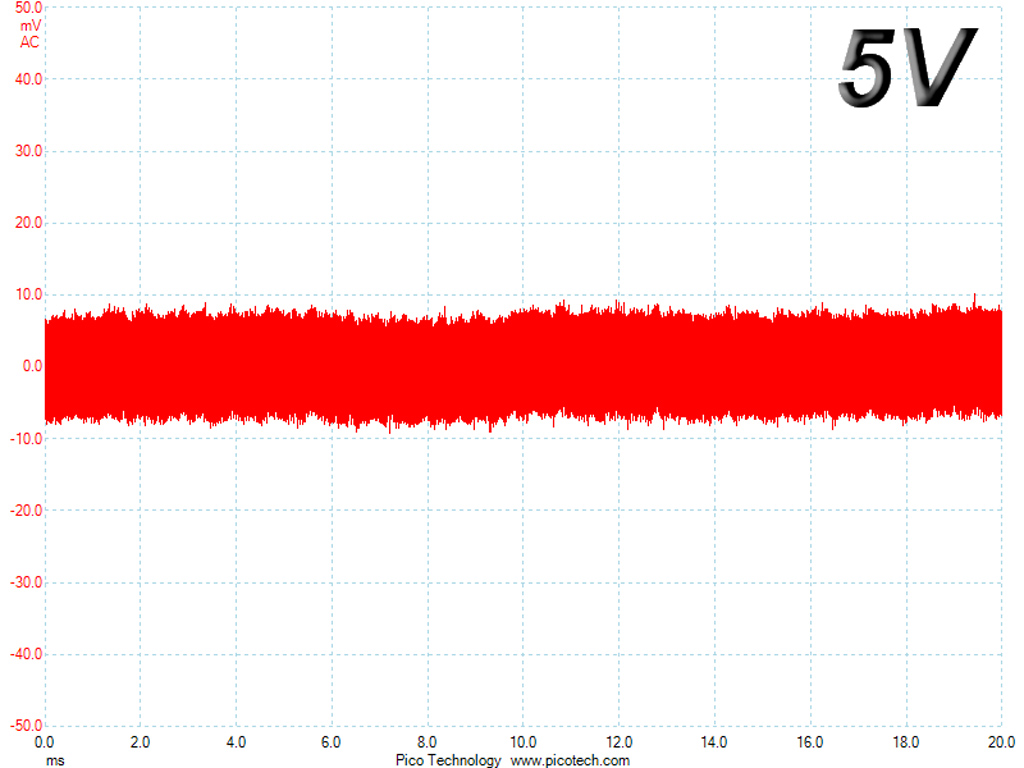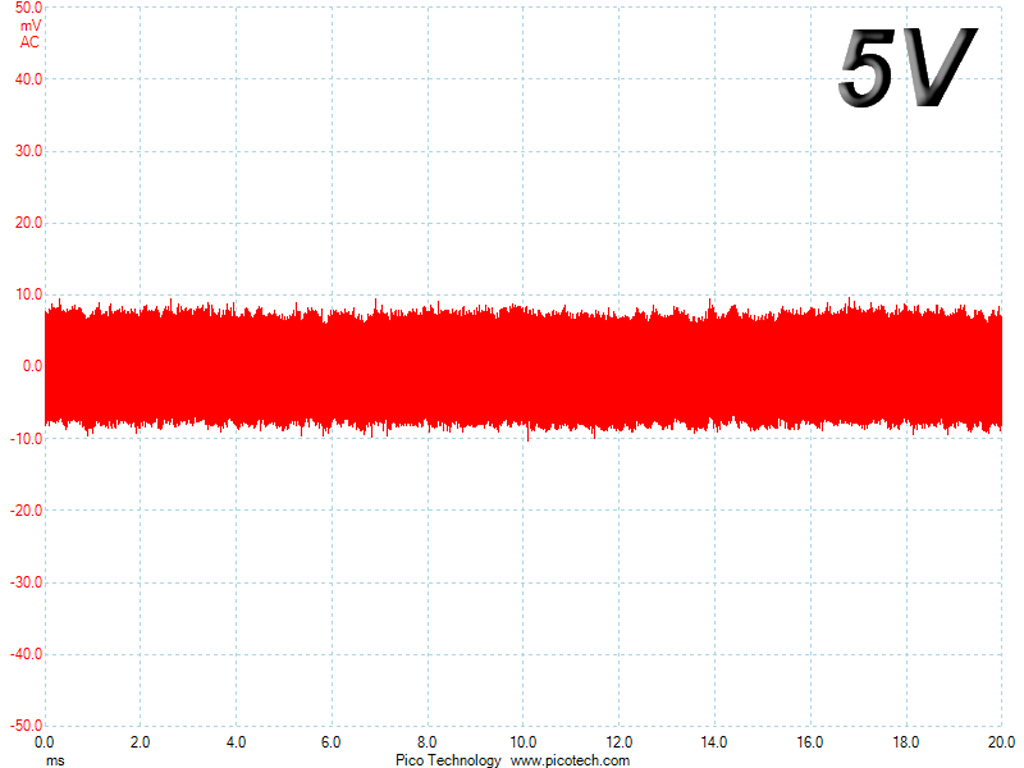SilverStone Strider Titanium ST60F-TI PSU Review
SilverStone released its first Titanium PSU series, which is made by Enhance Electronics. The smallest Strider Titanium unit will be under our scope today. Besides high efficiency it also offers compact dimensions and a fully modular cable design.
Why you can trust Tom's Hardware
Ripple Measurements
To learn how we measure ripple, please click here.
The following table includes the ripple levels we measured on the ST60F-TI's rails. The limits, according to the ATX specification, are 120mV (+12V) and 50mV (5V, 3.3V and 5VSB).
| Test | 12V | 5V | 3.3V | 5VSB | Pass/Fail |
|---|---|---|---|---|---|
| 10% Load | 21.5mV | 8.0mV | 14.5mV | 5.0mV | Pass |
| 20% Load | 23.1mV | 8.6mV | 16.0mV | 5.0mV | Pass |
| 30% Load | 29.9mV | 9.6mV | 20.9mV | 5.9mV | Pass |
| 40% Load | 36.9mV | 10.6mV | 18.8mV | 7.0mV | Pass |
| 50% Load | 42.7mV | 11.2mV | 20.1mV | 7.9mV | Pass |
| 60% Load | 51.0mV | 14.1mV | 23.2mV | 8.9mV | Pass |
| 70% Load | 58.4mV | 23.0mV | 38.6mV | 17.1mV | Pass |
| 80% Load | 64.6mV | 24.6mV | 43.6mV | 17.6mV | Pass |
| 90% Load | 69.0mV | 18.7mV | 36.9mV | 10.4mV | Pass |
| 100% Load | 74.7mV | 19.7mV | 30.0mV | 11.2mV | Pass |
| 110% Load | 81.5mV | 21.2mV | 30.2mV | 12.2mV | Pass |
| Cross-Load 1 | 24.3mV | 9.2mV | 16.6mV | 5.0mV | Pass |
| Cross-Load 2 | 73.7mV | 19.6mV | 28.1mV | 10.7mV | Pass |




The secondary side could use more filtering caps, though that'd result in higher energy losses. This is why ripple suppression on the +12V rail is mediocre. The same goes for the 3.3V rail, where strangely enough ripple peaks during the 80% load test. On the contrary, ripple suppression on the 5V and 5VSB rails is pretty good.
Ripple Oscilloscope Screenshots
The following oscilloscope screenshots illustrate the AC ripple and noise registered on the main rails (+12V, 5V, 3.3V and 5VSB). The bigger the fluctuations on the screen, the bigger the ripple/noise. We set 0.01V/Div (each vertical division/box equals 0.01V) as the standard for all measurements.
Ripple At Full Load




Ripple At 110-Percent Load




Ripple At Cross-Load 1




Ripple At Cross-Load 2




Get Tom's Hardware's best news and in-depth reviews, straight to your inbox.
Current page: Ripple Measurements
Prev Page Transient Response Tests Next Page Performance, Performance Per Dollar, Noise And Efficiency Ratings
Aris Mpitziopoulos is a contributing editor at Tom's Hardware, covering PSUs.
-
JamesSneed So essentially this is a overpriced PSU with to much ripple. This left me wondering why the EVGA SuperNova 850 T2 was not in the charts. You mentioned the SuperNova towards the end and it just seems like the proper competitor since its another TI rated PSU.Reply -
Jack_565 Nice to see a review on at least one of the Strider Titanium units.Reply
I recently purchased a 800w Version(these are the only Titanium PSUs in the Australian Market under 1000w) and its been everything i've wanted, running at almost 50% load it gives me its peak efficiency which is exactly why i paid the premium to get a Titanium PSU.
I can see the 600w version being a more commonly purchased unit with the way power consumption has dropped, Skylake Rigs only use around 300w(give or take variables) which would be the Striders peak efficiency. -
turkey3_scratch Jonnyguru also did a review on the same unit here, so the "high" ripple is consistent among these units. Probably due to a lack of filter capacitors, either to increase efficiency or conserve space. I'd like to see how the efficiency would be improved if they used a relay.Reply
What I don't understand is the small transformer. Aris, you mentioned that this unit, to have higher efficiency, switches to not-as-high of a frequency (which also affects transient response negatively). Since transformer size is inversely proportional to the AC frequency, wouldn't the transformer have to be larger? Is there any downside to a smaller transformer?
Yet again, more PWR_OK cheaters. It seems like at least one in two PSUs are like this. I agree that no power switch on this unit seems very silly to me. -
Aris_Mp The switching frequency probably isn't as high in order to achieve the higher possible efficiency, but this doesn't necessary means that it isn't high enough to allow for a small main transformer. In addition the design of the transformer plays a key role also in this.Reply